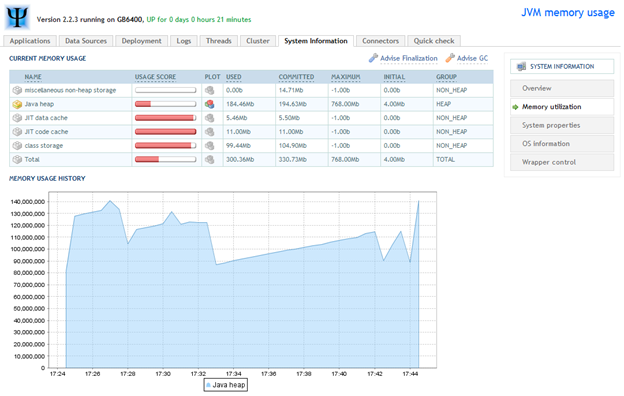Some of the most common requests that we field from our clients are related to IBM Cognos application performance tuning. Most administrators have the desire to squeeze every last drop of performance out of their applications and make the most out of the hardware they are hosted upon and Cognos is no exception to this practice. Read more
Tag Archive for: IBM Cognos 8
You’ve gone through the exercise of creating your data warehouse, developing a model and creating the most relevant and useful reports your organization could use. You’ve gone live: consumers have their logins and have been trained on how to receive their daily fill of data. There may be a few hiccups here and there but in general things are going well.
For the most part, users who begin to use Cognos will find themselves using it more and more, making requests as they discover the possibilities presented to them. Convenient as it already is, there will be several groups of users who may need or want even more accessibility. How do you deliver for them? Read more
The implementation of 64-bit infrastructures has become commonplace throughout most IT departments regardless of the size of the organization. Whether it is a corporate decision to utilize the opportunities available with the more powerful architecture or simply a question that arises when purchasing new hardware, it has become a common thread in all IT discussions. As hardware costs continue to drop and 64-bit operating systems and applications become more prevalent, IT decision makers are often encouraging the move. What is often lost in this decision is whether the hosted applications are truly 64-bit. Has the application been written to utilize all the available resources or does it simply run in a 32-bit emulation or processor core on the selected hardware? What advantages will actually be realized by “upgrading” to a 64-bit application? The true answer to this question often requires a bit deeper look under the covers. Read more
The IBM Cognos Forum and IBM Information On Demand 2010 will be jointly held this year in Las Vegas, Nevada from October 24-28.
In the past we’ve discussed the benefits of changing the default skins within your organizations different IBM Cognos environments, and we’ve also tackled the use of Layout Component References to help centralize and simplify repetitive report design tasks which can be otherwise time consuming. Now we will combine these concepts along with some new techniques in order to implement a single standardized report template for your entire environment, ensuring that your distributed reporting has a uniform and professional look and feel. Read more
As consultants the first question we are often asked by our customers is can we build reports directly against our transactional systems. While there are some exceptions our general best practice is to recommend against this type of architecture.
The reasons are long and detailed, but simply put, some high level reasons not to build reporting systems off of normalized databases are:
- Query performance
- General production system performance
- Aggregate view of data vs transactional view
- Complex SQL
- Normalized databases are typically tuned for simple queries
The discussion then leads to questions surrounding data mart or warehouse creation. Typical initial concerns are time, money, maintenance, and flexibility. All which are real considerations when traveling this path.
We are excited to announce our first course in a series of IBM Cognos public training offerings. This is a fantastic opportunity to experience the same high-caliber training curricula as our on-site courses, led by our very own veteran consultants, at a fraction of the standard price.Class sizes for these public courses will be kept small to ensure the most valuable experience for all attendees, and thus space is limited.
Course: IBM Cognos 8 Report Studio Fundamentals (View Description)
When: July 12-14, 2010
Where: IBM Innovation Center (Newport Room), Waltham, MA (Boston)
Read more
While the IBM Cognos 8 BI application suite provides best of breed capabilities and user acceptance, the one size fits all approach necessary for software vendors to allow their applications to remain business agnostic can often leave organizations lacking a focused solution to a specific issue. Providing a process to extend and add value to your organization’s solutions by utilizing existing application architecture ensures that the company continues to realize the maximum ROI from their Cognos software. The Cognos SDK provides a method for IT professionals to collaboratively utilize additional applications, streamline business processes and reduce manual work with a minimal resource commitment. Read more
Beginning with IBM Cognos 8.4 and higher, IBM provides a means of linking package objects from within Cognos Viewer or any of the studios, to IBM Business Glossary to serve as a central, web-based repository for documentation. If you do not own Business Glossary but you do have an existing enterprise wiki that houses your own organizations business documentation, with a little bit of ingenuity we can integrate that resource using the same inline facilities. Read more
One of the most daunting tasks for any Cognos administrator is the process of providing a sustainable and intuitive reporting solution that deciphers the often overwhelming user requirements into the simple question “What do they want?” Feedback is essential in developing methodologies and standards that increase the efficiency and usability of your Cognos environment. While the previous statement sounds straight forward, detailed feedback is often difficult to gather, quite frequently lacking articulation or clear definition. In addition, there are situations where people simply can’t communicate exactly what they want, or do not know how to ask for it. One of the most overlooked and underutilized tools in the IBM Cognos BI arsenal can assist you in forming an idea of what and how you need to deliver on user requests, providing feedback anytime you want without the need for multiple user requirement meetings.



